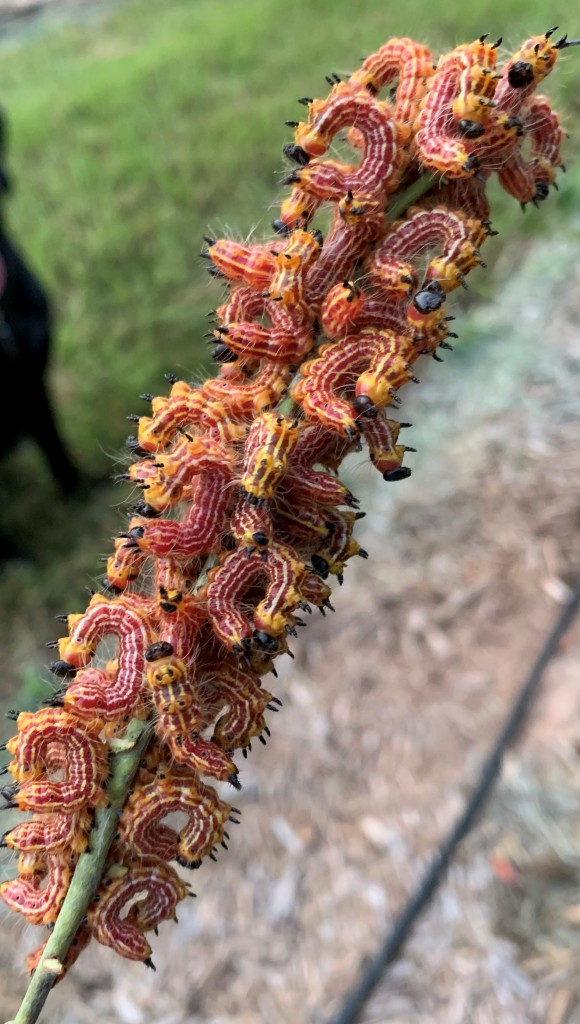The yellownecked caterpillar is a common pest of shade trees and shrubs. It is found throughout the eastern United States. It feeds on a variety of trees including basswood, birch, elm, honeylocust, oak, maple, and walnut. This insect is also destructive on the foliage of blueberry, apple, and other fruit trees.

The adult stage of this caterpillar becomes a small, reddish brown moth with a wingspan of about two inches. The larvae grow to about two inches long and are black with four yellow stripes on each side. Their bodies are covered with long, fine whitish hairs. The head is jet black and the segment behind the head is bright yellow, hence the name yellownecked caterpillars. When disturbed, the larvae assume a defensive posture by lifting their head and tail into the air and making a distinctive “U” shape with their bodies. Although they appear threatening, these caterpillars are harmless to humans—they don’t bite or sting.
The adults moths usually appear in early summer around May and June. Females will lay their eggs in masses on the lower leaf surfaces with as many as 100 or more eggs. After hatching, the young larvae congregate on the foliage and feed in groups for the remainder of the summer. This group feeding behavior is similar to that of sawfly larvae, which are sometimes confused with yellownecked caterpillars.
The larvae usually congregate near the ends of twigs and branches. Newly hatched caterpillars will skeletonize the foliage and leave only the largest veins attached. Fruit trees, especially blueberries, can be seriously defoliated. For larger shade trees in a forest, they are able tolerate the damage and it is seldom of concern.
Begin monitoring your blueberries and other ornamental trees and shrubs from mid-June through August for caterpillar larvae. When possible, remove foliage that contains white mass of eggs on the lower leaf surface. For backyard blueberry growers, spraying is usually not necessary. Because yellow necked caterpillars feed in groups, you can easily cut off the infested branches or knock them off into a bucket of soapy water and drown them for immediate gratification. This technique also works well for Japanese beetles and June beetles.
If the leaves on your plants have already been eaten by yellownecked caterpillars, there’s no cause for concern. Most healthy plants are able to grow new leaves and will fully recover by next spring. The loss of leaves in mid-summer may reduce your potential fruit yields. Therefore, it’s important to catch the problem early and control these caterpillars before they cause significant damage. This is true for most leaf-chewing insects such as other caterpillar species, sawflies, and beetles. Once the leaves are damaged and the insects have moved on, there’s no benefit to spraying the plant with an insecticide, especially as we approach fall and winter dormancy.
Paul Pugliese is the Extension Coordinator and Agricultural & Natural Resources Agent for Bartow County Extension, a partnership of The University of Georgia, The U.S. Department of Agriculture, and Bartow County. (770) 387-5142. For more information and free farm, lawn, or garden publications, visit our local website at ugaextension.com/bartow .
